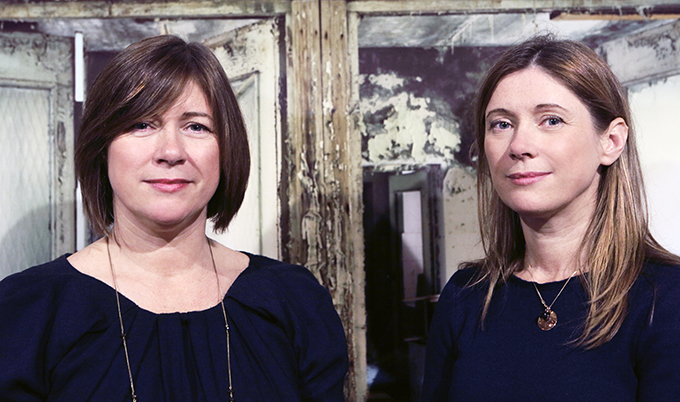Wilsons appointment
Acclaimed artists Jane and Louise Wilson join Newcastle University
Published on: 23 June 2017
Leading contemporary artists Jane and Louise Wilson have been appointed to Newcastle University’s pioneering Fine Art Department.
Wonderful acknowledgement
Twins Jane and Louise have a national and international reputation, forged over the past two decades as artists working with photography and the moving image, installation in an expanded form of cinema and lens-based media.
Their work, which often looks at abandoned buildings and inaccessible places, has put them at the forefront of the contemporary art scene. They were nominated for the Turner Prize in 1999 for their multi-screen installation, Gamma.
Louise said: “I feel honoured to begin this new and exciting role with the School of Arts and Cultures in the Fine Art Department at Newcastle University.
“Our joint appointment represents a welcome return to the region for us both, not only because we were born in Newcastle, but because it was where we were first given the opportunity to study and develop our practice as contemporary artists.
“It was through the creative freedom of an art education that so many more possibilities were opened up, ones which still inspire and inform our practice as artists and lecturers today.’’
Jane said: "I'm very excited to take up the position of joint Fine Art Professorship at Newcastle University. It is a wonderful acknowledgement of our significant experience as artist practitioners, who have been recognised in the field of research and critical thinking. Whilst encouraging a key awareness of the wider context, we aim to enable a self-motivated and self-reflective experimentation.’’
Richard Talbot, Head of Fine Art at Newcastle University, said: “These appointments are very exciting and expand the creative possibilities, the ambition and the thinking that the students are exposed to.
“Jane and Louise are adding to the long list of very distinguished artists who have been associated with the department, either as students or staff."

Carefully choreographed
Originally from Newcastle, in 1989 the twins graduated with identical joint degree shows in Dundee and Newcastle, before working in collaboration for their postgraduate degrees from Goldsmiths College in 1992.
Through carefully choreographed film installations, sound works and photography, they have explored some of Europe’s least accessible sites, including a former Stasi Prison in what was East Berlin, the British Houses of Parliament and the huge Star City complex in Moscow -a key site of the Russian Space Programme.
They have held exhibitions in the UK and worldwide, including Kazakhstan, the USA, Canada and Japan.
The sisters completed a commission for the Imperial War Museum, London, which opened in October 2014 – January 2015 and which toured to MIMA, Middlesbrough and Wolverhampton Art Gallery through 2016. Their research for the project, primarily at the Imperial War Museum archive, looked specifically at archive images of early surveillance and camouflage techniques employed during World War I. The completed film installation “Undead Sun” 2014, was commissioned by the Arts Council of England and the Imperial War Museum to mark the Centenary of the First World War.
They are currently exhibiting their work Sealander at the J. Paul Getty Museum, in Los Angeles, USA. The four large-scale photographs of bunkers erected by Hitler along the European Atlantic coast during World War II and a video of its original presentation, are on show until July. Their next exhibition will take place at the Metropolitan Museum of Art, New York, in 2018. They take up their new posts at Newcastle University in August.
Distinguished artists
The University’s Fine Art department is ranked number one in the country in both the Sunday Times University Guide and the Complete University Guide and is ranked number two in The Guardian University League table.
With its origins going back to the 1830s, many distinguished artists have studied and taught here, including pop art pioneer Richard Hamilton and abstract artist Victor Pasmore. The Basic Course they developed at Newcastle during the 1950s and 1960s helped revolutionise art education in the UK.



